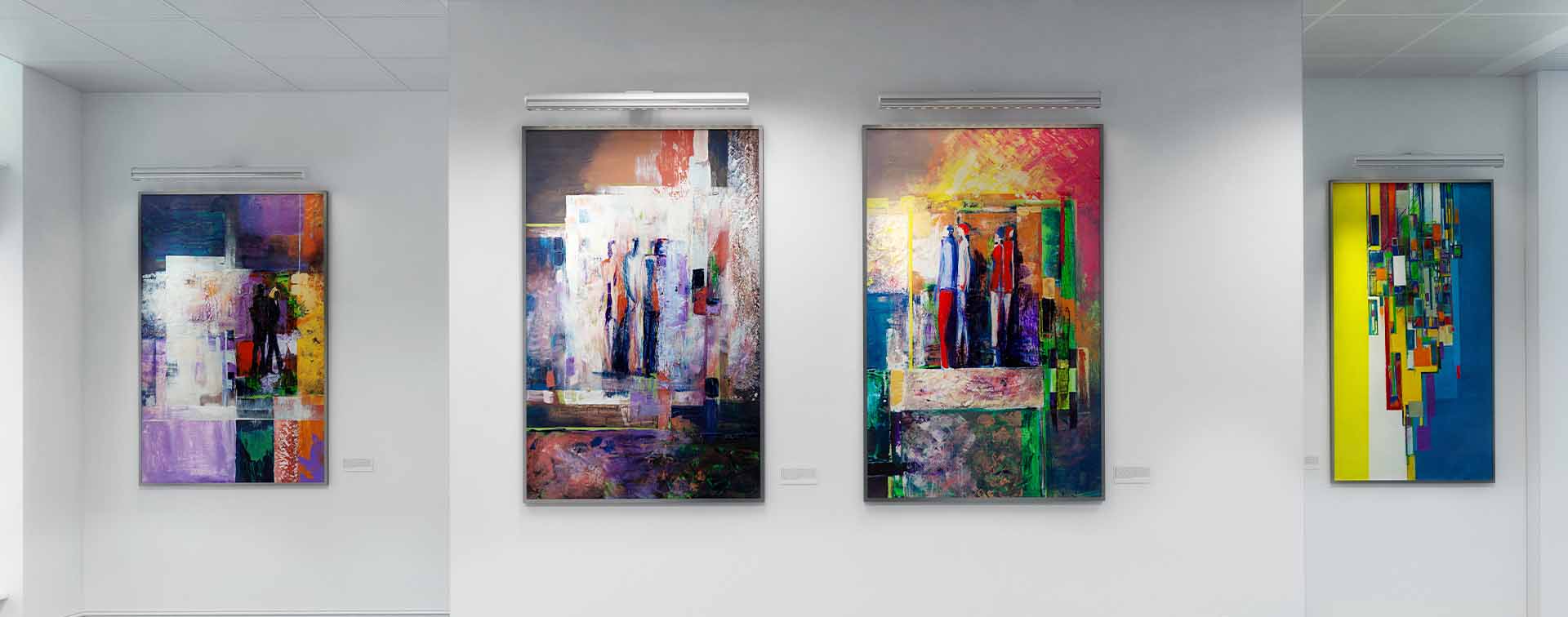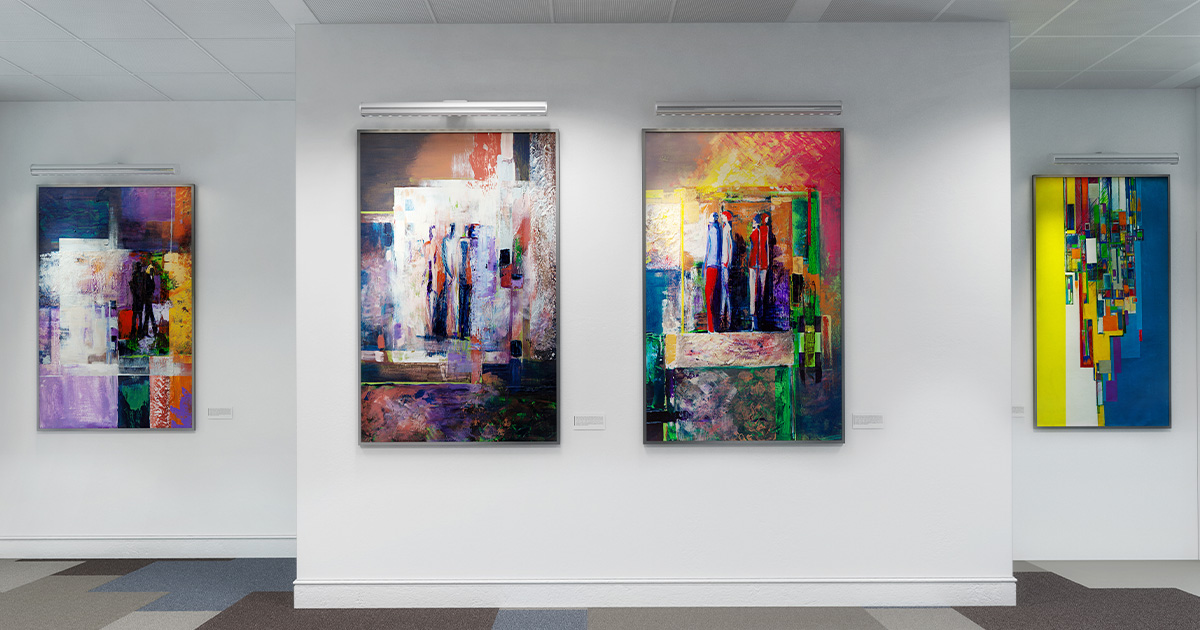I am sometimes amazed by the many changes that the global art market has experienced in the past 10 years or so. Covid-19 can be blamed for some of these shifts, as it forced the art market to close for a short time and virtually reinvent itself. To cite a few examples, printed catalogues at auction houses were all but scrapped; online auctions became the new top mode of selling; and, as a result, buyers of art and collectibles throughout the world quickly adapted to bidding online on expensive paintings and decorative works of art, practically unseen.
In a flash, the auction world had been reduced to the size of a laptop screen.
And while the art world may now have returned to a state of normalcy, several of its new aspects stand out sharply. Things old and traditional are out of favor. Things new and novel are all the rage. And “luxury” is now the art scene’s latest and trendiest buzzword.

Having started my career in the art market almost exactly 35 years ago, I can attest to the almost shocking and revolutionary changes that have swept this exalted realm since then. I have seen it grow from a sort of quaint, old-fashioned village, catering to a select few privileged individuals, into a vast worldwide empire, with new money and new players constantly driving its expansion and diversification.
With all this change have come wondrous opportunities — but also many pitfalls, for the art market remains largely unregulated, and it can be a predatory and dangerous place for those unaware of its protocols and practices. Thus, it might be helpful to describe what this “new” art market looks like, who some of the major players are, what collecting fields are hottest and most vibrant, and how to approach the timely topic of art-as-an-investment.
Let’s start with the major players
The international auction houses such as Sotheby’s, Christie’s, and Bonhams have been in business for hundreds of years and offer a dazzling array of sales throughout the year in many diverse collecting categories. Since they provide a wealth of information on their websites about every conceivable collecting field of interest, they are an efficient means of buying and selling art and collectibles with genuine transparency.
Then there are the dealers and private advisors, from the global powerhouses such as David Zwirner and Pace to smaller, more bespoke galleries, with their greatest emphasis these days on modern and contemporary art, especially the newest works by unknown and emerging artists. Think of Jean-Michel Basquiat and Andy Warhol as once having been such artists, and one will quickly realize the allure of collecting works by new artists that one day may also be worth millions of dollars.
One cannot forget art fairs, such as Frieze New York, London, and Los Angeles, or Art Basel in Miami, and Masterpiece in London. Art fairs have become a new phenomenon for collectors and art market enthusiasts, offering the greatest array of contemporary art in exciting, buzz-worthy venues filled with energy and glitz. Akin to vast, upscale, champagne-fueled flea markets for seasoned as well as beginning collectors, they are a wonderful way to train one’s eye and see the latest contemporary art.
What is out of favor
Not too long ago, such traditional collecting fields as period furniture, carpets, silver, porcelain, and other decorative objects ruled the art market. But these fields have fallen out of favor as the emphasis has shifted to things newer and more appealing to a younger generation of collectors. Think of a Park Avenue apartment filled with traditional furnishings. The market has essentially turned away from such taste in favor of a more modern, spare, sleek, and contemporary look. French furniture is thus out, Danish modern in.
What is in favor
Perhaps the words “collectibles” and “lifestyle” best capture the spirit of the art market today. Think of wine, whiskey, watches, Formula One race cars and vintage Ferrari roadsters, Hermès handbags, baseball cards, sneakers once owned by Michael Jordan, anything owned by Elton John or Freddie Mercury, vintage guitars, vintage planes, vintage jewelry, and colored diamonds. This is not to say that the older collecting fields have faded away entirely, for there is still abundant activity in and enthusiasm for older and more traditional furniture and decorations. But the trend now, perhaps because of the market’s youth movement, is certainly toward luxury goods.
Is art a good investment?
Not long ago, it used to be the case that talking about art as an investment was almost vulgar, as if collecting was for purists who cared little for the increasing value of their prized Impressionist paintings and 18th-century French furniture. But that was before the value of art exploded in every direction — before the art market became a global colossus.
So now one must think of art as an investment.
I say this because, with significant sums of money being spent by today’s ultra-high-net-worth families and collectors almost casually on the most prized possessions, due diligence and discipline are more important than ever, especially in a market where expensive mistakes can easily be made, even by the savviest individuals. Fakes, forgeries, and overpriced goods are plentiful.
And, while there are many opportunities for exploring new and overlooked niches of the market — such as photographs, prints, works on paper, and especially items in the old traditional fields of collecting that have been somewhat eclipsed, such as English furniture and porcelain — there are always pitfalls, and these must be heeded and avoided.
This is why impartial advice, caution, and oversight are crucial for success in today’s art market. Think of the risk management that financial advisors bring to a client’s financial portfolio. The same approach must be taken with one’s art portfolio.
In the very exciting and welcoming art market of today, with abundant alluring and dazzling opportunities, one wishes always to have a happy, productive, and stress-free experience.

